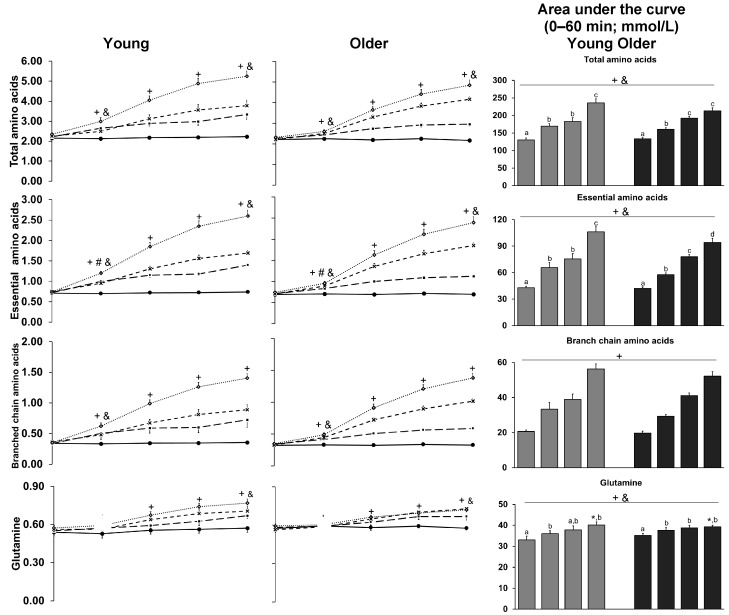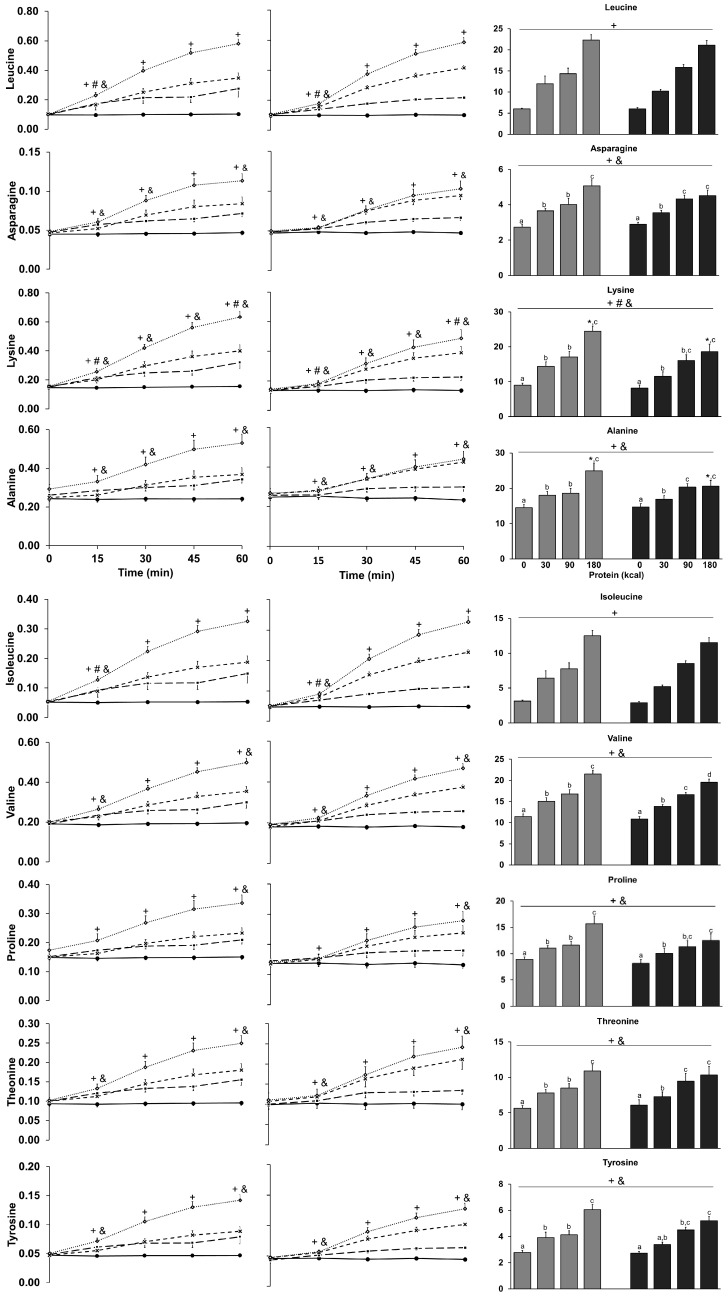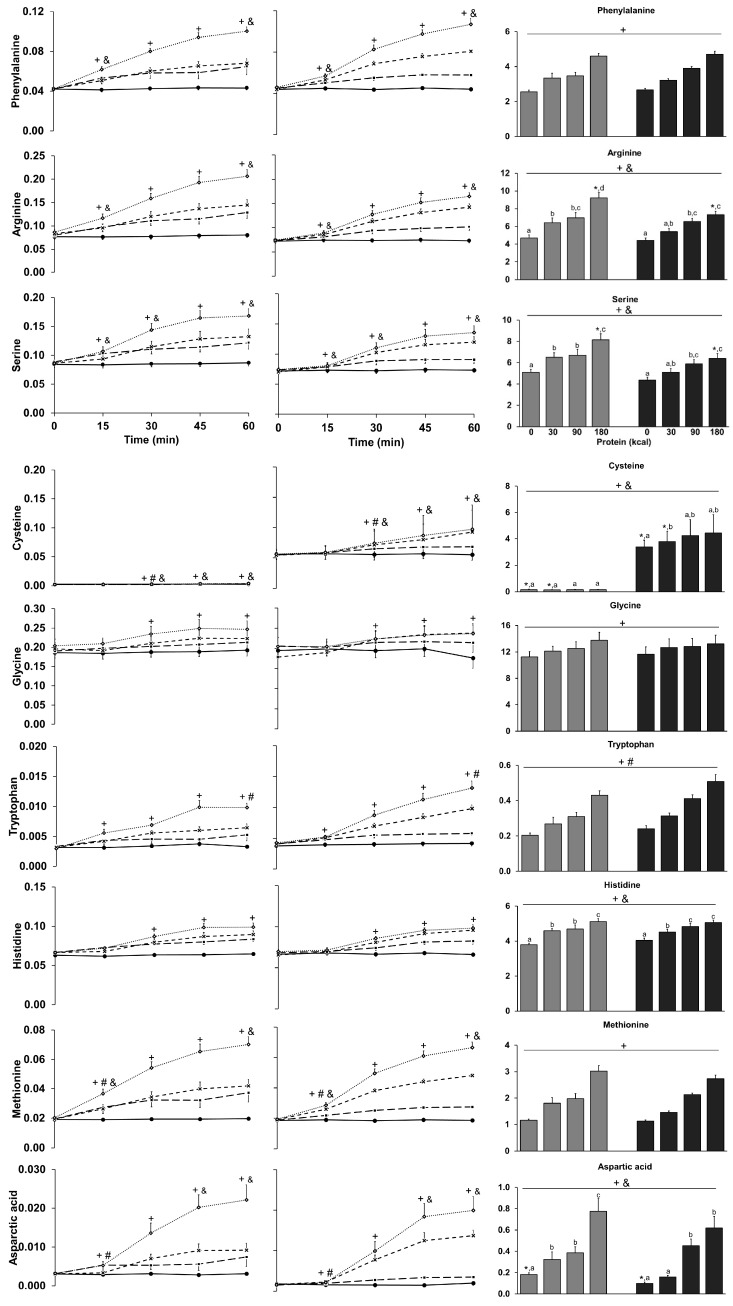Figure 4.
Mean (±SEM) and area under the curve concentrations of plasma total amino acids, essential amino acids (histidine, isoleucine, leucine, lysine, methionine, phenylalanine, threonine, tryptophan, and valine), branched chain amino acids (isoleucine, leucine, and valine), and individual amino acids ranked in order of highest to lowest prevalence of amino acids in the whey protein hydrolysate, in healthy younger (n = 10; n = 9 for histidine) and older (n = 10) men during intraduodenal infusions of saline (control; solid line with closed circles) and whey-protein loads of 30 kcal (7.5 g protein; dashed line with closed squares), 90 kcal (22.5 g protein; dashed line with crosses), and 180 kcal (45 g protein; dotted line with open diamonds). Main effect of protein-load, age, and interaction effects were determined using a mixed-effect model with baseline concentrations as a covariate and post-hoc Bonferroni correction; statistical significance was accepted at p < 0.05. + p < 0.05 Effect of protein-load. # p < 0.05 Effect of age. & p < 0.05 Interaction-effect of protein-load by age. * p < 0.05 Interaction-effect post-hoc tests: older compared to younger men (AUC 0–60 min); a, b, c, d p < 0.05 a different letter indicates a difference between protein loads (AUC 0–60 min; ‡ p < 0.05, ‡‡ p < 0.01, ‡‡‡ p < 0.001): at 15 min during 180 kcal protein infusion, older compared to younger men: lower total (‡), essential (‡), branched chain amino acids (‡), leucine (‡), asparagine (‡), lysine (‡), isoleucine (‡), valine (‡), threonine (‡), tyrosine (‡), phenylalanine (‡), asparagine (‡), serine (‡), and methionine (‡); at 60 min: lower glutamine (‡), lysine (‡), arginine (‡), and higher phenylalanine (‡), and aspartic acid (‡) during 90 kcal protein infusion, and cysteine during 30 kcal protein (‡) and control (‡‡) infusion.




